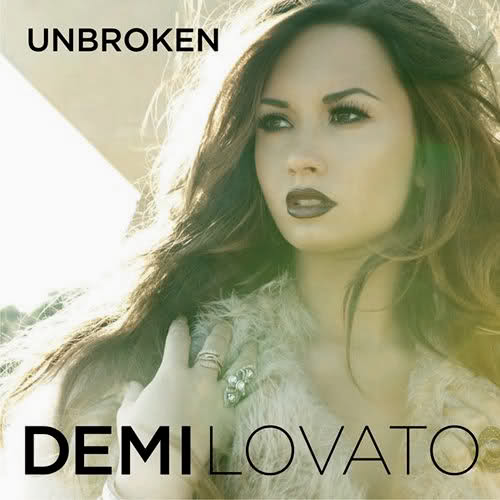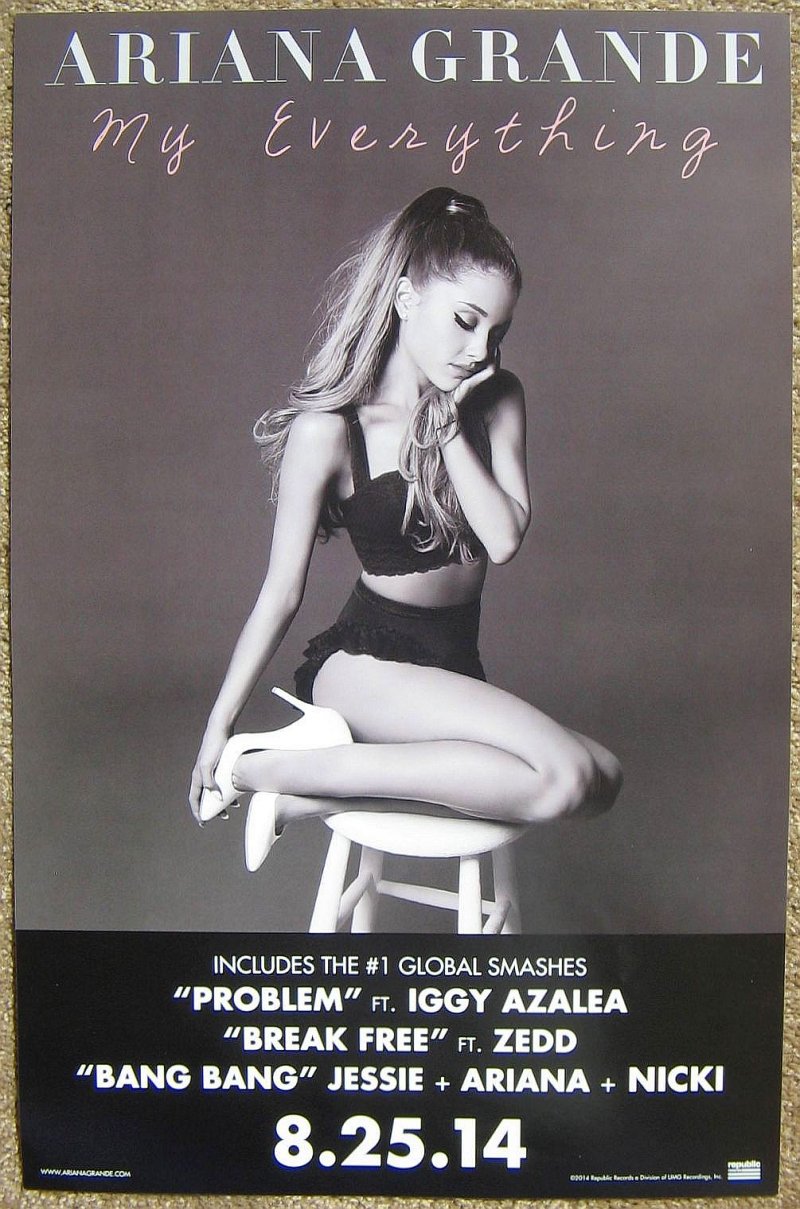As part of my task alongside the music video I will create, I must also create a digipak. I will research this by looking into the components of a digipak, such as CD covers and booklets, the posters used to promote new albums and the websites of other artists and groups. Moreover, I will research digipaks of the genre of song I have chosen, and outside of this genre to ensure variety in my work. I should be influenced by the designs and styles of all of these digipacks that I will research, which will hopefully give me a clear idea of what I wish to use for my own digipak.
Components of an album cover
Front Covers
The front cover of a CD is usually very straight forward. The front cover will contain only three features in most cases; the photography, the artists' name, and the name of the album. As can be seen from the image to the left, lots of artists use a simple, close-up, 'headshot' style image so as to remain the focus of the cover. Most albums tend also to have the artists' name in large, bold print to stand out and the album title is either the same size, or placed centrally if slightly smaller. Adele on the other hand, has chosen to have both her name and album title in the bottom right hand corner, although the contrast in colours draws the audiences' eye to the title of the album.

Other artists however, such as popular band Coldplay prefer to use art for their cover instead of typical shots of the band/ artist. For their album 'Mylo Xyloto', the band have used a background of vibrant, colourful graffiti and the album cover title takes centre stage, with unusually no mention of the bands name either. This trend of cover art being used for CD covers has been used by artists such as Mika, Green Day, Maroon 5 and Christina Aguilera among others. The non conformist nature of this album cover and others like it, convey that the artist does not want to be typecast, but wants to stay different and unique within the music industry.
Back Covers

The back covers of CDs all tend to have certain features. These are shown in the image to the left of Taylor Swifts CD cover for her album, '1989'. The back cover will always contain a list of the song tracks, the name of the artist and album title along the spine, a bar code, the label name and information, as well as acknowledgements of producers and a tag line prohibiting copyrighting the CD/ filesharing. Some artists such as Swift choose to have an image on the back of the CD cover, this is usually of the artist and fits the theme of the front cover. Swift has used a unique style for her album, it feels nostalgic given the faded colours and handwritten elements of the cover.

Whilst some artists choose to use photography for the back cover as well as the front, other artists such as John Legend choose a simplistic format for the back cover. The cover is minimalistic, featuring only one block colour which matches the floral photography of the front. The track names instantly draw the audience's attention given the bold font and black colour ensuring that they really stand out from the pink.The added features are emphasised by the use of red font colour for the 'Bonus Tracks' which contrasts with the the other colours. The choice of colours are important, as these colours are usually associated with romance and have romantic connotations for the audience, this is an intentional decision by Legend given the romantic theme of the songs on the album, such as 'You & I'
Booklets/ Interior
The interior of CD covers contain a booklet. The booklet has numerous pages and different functions. The booklet uses a variety of additional photography of the artist, reflecting the nature of the album. All booklets contain a page like the photograph on the left. This is taken from Rihanna's album 'Loud' and is an acknowledgements page. Rihanna thanks those important to her in the open letter, including God, her family, friends, management, studio and agents.

The rest of the booklet contains pages like these; dramatic, photographic spreads which emphasise the artist and her creativity which is expressed in the model pose, her vibrant red hair and romantic pose with red roses. The pose conforms also to the male gaze, Rihanna's stance being quite provocative, this is a common feature of Album covers which is evident in the work of artists such as Miley Cyrus and Nicole Scherzinger Many of the songs on the album focus on the topic of love, as this is reflected in the photography of the album. The actual content of the pages is song titles, and credits as to who helped write/ produce the track.

This spread also connotes Rihanna's creative/ free spirit with the emphasis of interaction with nature and her body language conveying her peace. Although Rihanna, and others dedicate this space purely to song titles and credits, other artists use this space to provide the lyrics of their songs to engage with the audience. Bonus Albums frequently add additional material in the digipak to encourage their sales. Rihanna conformed to this promotional tactic and the deluxe version of her album, contains a full Photo-book of Rihanna, a cover art lithograph and 30 minute documentary DVD featuring a behind the scenes look at the making of 'Loud'.
Album covers from my songs' genre - Classical
The album cover for classical artist/ singer Hayley Westenra's 'Hushabye' is a good example of the representation of classical artists. The CD cover conforms to the image of classical music being quite ethereal in nature, hence the clouds and 'heavenly' background lighting. The actual cover is fairly simplistic, the font is bold and the name of the album stands out. The shot of Hayley is common of most CD covers as it ensures that the artist is centre of attention, this kind of shot is however usually a close-up, but a long shot is required for this CD cover to emphasise the background. Although this is a typical classical album cover, I find it to be a bit dated and mundane. Therefore I would like to add a contemporary twist to my own digipak, with influences from other genres as well as classical to give my album cover a more modern, colourful look.

The album cover for classical singer, Josh Groban's 'Stages' is of great interest to me. The cover both conforms to, and subverts stereotypes of the genre. The cover features the artist as the main focal point, a common feature of the genre which is seen across the classical and other genres. The cover takes on a modern element that is not typically associated with classical music, through the contemporary use of streaked lighting and background photography of a building and lit sign to reinforce the modern nature of Groban's work, Groban is a classical artist who has modern influences from other genres such as pop and rock, and his album cover is designed to convey this, and the modern nature of his work. This modern twist on a more traditional genre is what I would like to convey through my music video and digipak.
Album covers of a different genre - Pop
Album covers of the pop genre all seem to have the same effect. The cover usually always features a close up of the artist, Selena Gomez's album is no exception to this. However, the rain effect, merging of lights in the background is a clever use of convergence which directly relates to the title of the album, 'A Year Without Rain'. This cover is fairly simplistic, I particularly like the font style and size, it has been placed well so as to just touch Gomez' shot but doesn't overpower it. The contrast of colours through the font ensures that the album title stands out, this tends to be a generic convention of the genre and most album covers use a different, vibrantly coloured font for the album name.

Miley Cyrus' cover for her hit album, 'Bangerz' is vibrant and reflects her alternative style/ persona. A suggestive long shot of Cyrus has been used as the main feature, Cyrus ensures that she is the subject of the male gaze given her provocative stance, and the bright red lipstick which draws the audience to her lips - this could be to conform to generic conventions of the music industry, or as a way of utilising stereotypes for promotional gain. The album cover is brightly coloured to grab the audiences' attention and the vibrant colours and trees in the background give the cover a tropical feel. Cyrus has used bold mutli coloured font for her name, the album title is made to stand out by being written in a fluorescent type and being bright pink so that the eye is instantly drawn to this.
Album covers of a different genre - Rap
The album cover for Eminem's 'Recovery' is not a typical representation of the rap genre. Usually a rap artists' cover will feature a close up of the artist, but will portray the artists' status and lifestyle through expensive gold jewellery and a powerful stance. Eminem's album on the other hand is a total juxtaposition of this, Eminem is not positioned centrally in the shot but the focus is on his name and album title.The album cover reflects the nature of Eminem's songs/ lyrics on the album. The album details Eminem's recovery from a drug and alcohol addiction, this is reflected in the set of the cover and Eminem's contemplative stance.
.jpg)
Kanye West's album cover for 'Graduation' does conform to the rap genre. The cover is brightly coloured, the artist's name and title of the album stands out. It is unique with the representation of the bear, although this is a continued theme across Wests' work and was seen on his album 'The College Dropout' also. The typical features of a rap album, exemplified in this work of West, is the need for a disclaimer in the bottom left corner of the album. The need for this label, detailing that 'Parental Advisory, Explicit Content' is needed for the audience, to inform that strong language, and references to sex, drugs and violence are frequently made within the rap genre - whether the artists' experience of these things or their rebuking of them, it is a safe guarding requirement for both the artist and consumer.




















.jpg)












